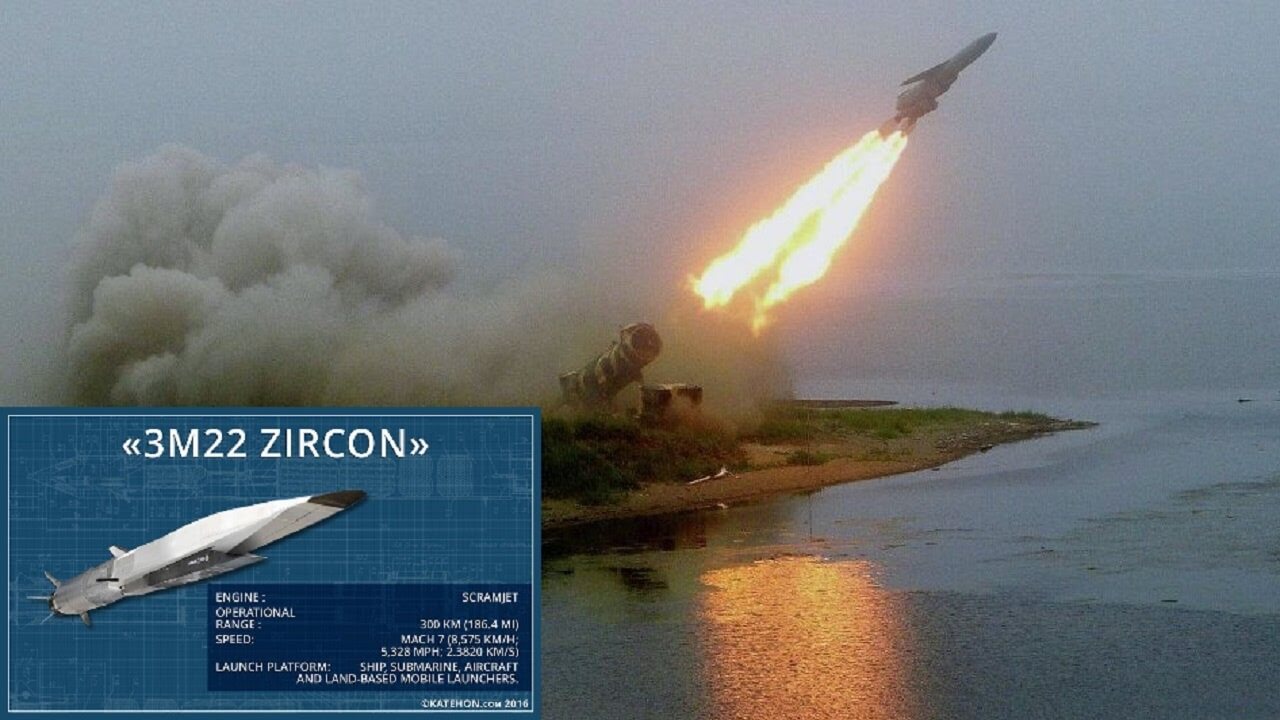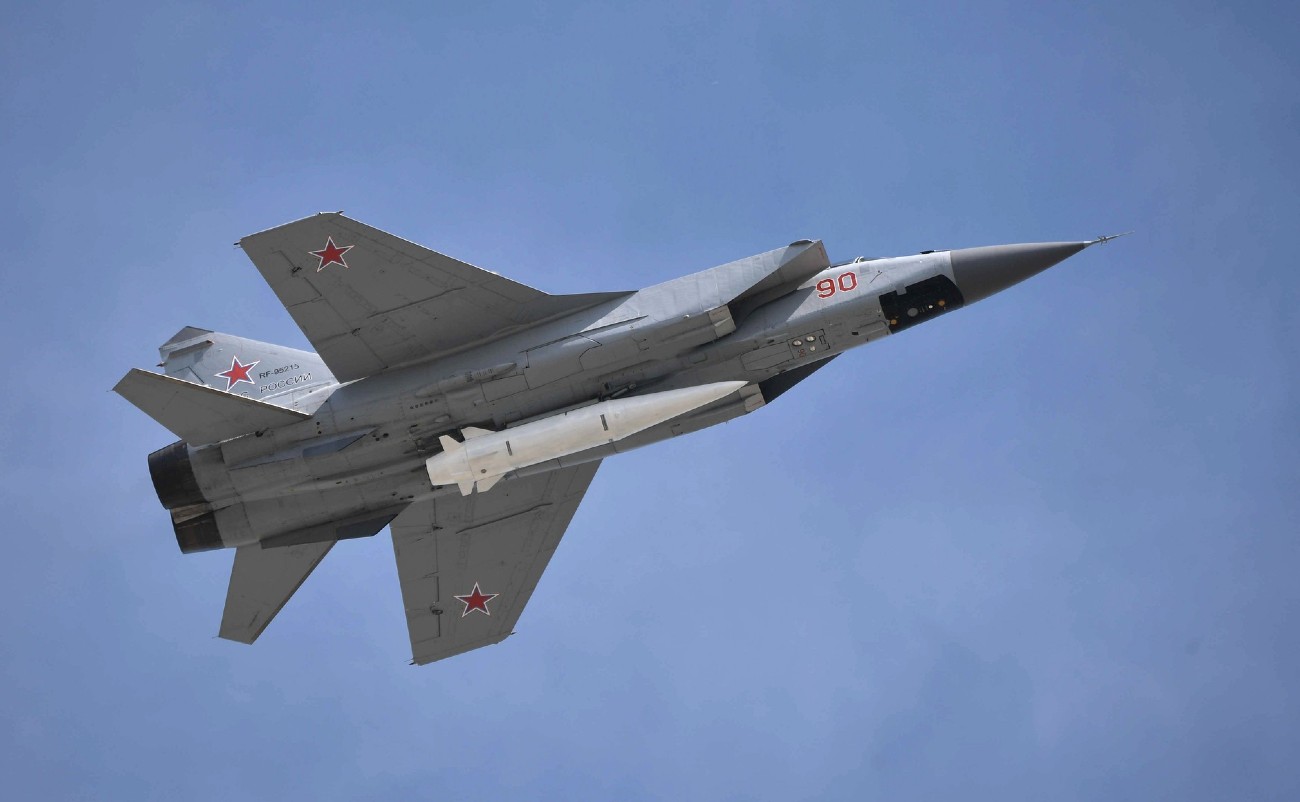President Vladimir Putin has accelerated the strengthening of Russia’s strategic and hypersonic postures. He told the Russian Federal Assembly that the vaunted Avangard hypersonic missile and Peresvet systems had been put on combat duty.
”Hypersonic warheads of intercontinental range Avangard and laser systems Peresvet are on combat duty,” President Putin was quoted as saying by state news agency TASS on February 29.
Based on new physical principles, the Peresvet laser system is the first combat laser system in Russia. Putin first disclosed the creation of the Peresvet system during his address to the Federal Assembly on March 1, 2018. The details of this system, built on novel technology, remain classified but it is expected to boost Moscow’s defense in a way not seen earlier.
However, it is the Avangard going on combat duty that has captured the public imagination. It comes months after a November 2023 broadcast on the defense ministry TV channel, which noted that Russian rocket forces transported an intercontinental ballistic missile equipped with the nuclear-capable “Avangard” hypersonic glide vehicle (HGV) into a launch silo in southern Russia.
The Avangard is a hypersonic glide vehicle that assumed combat duty in December 2019. The second regiment of the Avangard went on combat duty at the Yasnenskoye missile formation in December 2022, marking Russia’s Day of the Strategic Missile Forces.
Avangard hypersonic warheads and Peresvet systems are on combat duty, President Vladimir Putin said in his address to the Federal Assembly:https://t.co/t7T3hO0JcY pic.twitter.com/bIHp4oVwmL
— TASS (@tassagency_en) February 29, 2024
“Today, yet another regiment armed with the Avangard missile system was put on combat duty at the Yasnenskoye missile formation, becoming a true present for the Day of the Strategic Missile Force,” the ministry said.)
The Avangard can move and outrun any missile defense system at a hypersonic speed of Mach 27, or over 32,000 km/h, as claimed by Moscow. Since its 2018 public debut, the system has been positioned as the mainstay of the nation’s hypersonic capabilities.
The Avangard glide vehicle has no onboard engine, hence its high speed is dependent on reentry. It can change course while in flight to evade dynamic interceptions.
Earlier, when Avangard’s second regiment entered combat duty in December 2022, Russian military analyst Alexei Leonkov stated that it was hard to predict the Avangard’s flight path or create a missile fast enough to compete with it. He claimed thwarting Avangard would be an impossible task.
The introduction of Avangard into the Strategic Missile Force is significant as it is a hypersonic glide vehicle that various ICBMs can fire. Sergei Karakaev, the commander of the Russian Strategic Missile Forces, for example, had stated that several Avangard hypersonic glide vehicles may be used in conjunction with the newest Russian Sarmat intercontinental ballistic missile (ICBM).
This may be an even bigger threat now that Russian President Vladimir Putin pledged to deploy the highly-anticipated Sarmat heavy intercontinental missiles (ICBMs) on combat duty on February 29.
“The first serial Sarmat heavy ballistic missiles have also been delivered to the troops. We will soon demonstrate them in the areas where we are on combat duty.”
Putin today confirmed that the RS-28 Sarmat intercontinental ballistic missile system has been delivered for combat duty.
He also mentioned that the Zircon and Kinzhal hypersonic missiles have been used effectively in the special military operation zone. pic.twitter.com/wyF8GIHrUx
— Sentletse 🇷🇺🇿🇦🇵🇸 (@Sentletse) February 29, 2024
Russia has three hypersonic missiles in its inventory: Avangard, Kinzhal, and Zircon (or Tsirkon) hypersonic missiles. Of these, both Kinzhal and Zircon have been used against Ukraine in the ongoing war, which makes the Avangard’s activation for combat duty even more significant.
Russia’s Hypersonic Weapons In Ukraine
In the same Federal address that revealed information about Avangard, the Russian President acknowledged that the Zircon hypersonic missile had been used in combat. He did not give specific details about the use of the missile, but the admission came days after Ukraine retrieved a missile that appeared to be oddly similar to the Russian Zircon.
“The Zircon sea-based hypersonic strike system has already been used in the battle, and this system is already in service,” Putin had said.
Putin confirmed the use of the Zircon missile to kill Ukrainians.
“In combat, the Zircon hypersonic sea-launched missile system has already been used. The Sarmat system has been deployed in the troops; we will soon demonstrate it,” Putin said. pic.twitter.com/xVKVzrlN1k
— Maria Drutska 🇺🇦 (@maria_drutska) February 29, 2024
Earlier this month, photographs of Russian missile wreckage that was found in Ukraine bearing the marking “ZM22” gave rise to speculation that it could most likely be the latest “Zircon” (or Tsirkon) hypersonic missile.
At that time, reports on Platform X and local Ukrainian media noted that one of the images specifically depicted a piece of debris bearing the “3M22” designation, which, along with the Kh-47 Kinzhal, is associated with the so-called “Putin’s wunderwaffe,” or the Russian military’s most popular “hypersonic” long-range strike weapons.
This was likely the first combat use of the Zircon hypersonic missile which entered service with the Russian Navy in January last year.

While the claims could not be verified due to lofty assertions made by either side, the head of a Kyiv research institute conducted a preliminary analysis that concluded that Russia had hit Kyiv with the hypersonic Zircon missile. He reportedly examined a video purportedly showing missile wreckage with particular markings on it.
“In this case, we see elements that are characteristic of the 3M22 Zircon missile. Parts and fragments of the engine and steering mechanisms have specific markings,” he observed. However, despite this examination, Russia did not admit using the Zircon until now, as evidenced by the RIA Novosti report.
Zircon is a scramjet-powered hypersonic cruise missile. Utilizing cooled supersonic combustion ramjet engines, Zircon cruise missiles propel themselves forward by compressing air moving at supersonic speeds. It has a range of 1,000 kilometers and travels nine times the speed of sound.
Military experts believe that Zircon’s hypersonic speed could significantly shorten the reaction times of Ukraine’s air defenses and enable the missile to strike big, dense, and impregnable targets. However, the fact that the wreckage of the missile was allegedly recovered does establish that the missile is not invincible, much like its peer, Kinzhal.
Russia has used the Kinzhal hypersonic aeroballistic missile against Ukraine on multiple occasions. Ukraine has claimed on several occasions of having shot down the Kinzhal but has so far not provided any conclusive evidence for the same.
On May 4, 2023, the commander of the Ukrainian Air Force, General Mykola Oleschuk, claimed that a Kinzhal was intercepted by the Patriot air defense (AD) system. Later that month, the Ukrainian Air Force claimed interception of all six Kinzhal missiles launched by six RuAF MiG-31K fighters. Several such claims have been floated by Kyiv’s forces.

In early 2024, Ukrainian President Volodymyr Zelensky claimed that the nation’s air defenses had shot down 10 Kinzhal missiles in a single day. These assertions were rubbished by Russia. It maintained that the Kinzhal could not be shot down by a Western-origin missile defense system.
Kinzhal missiles are expected to become deadlier in the future, along with the Iskander ballistic missiles, as suggested by Russian Defense Minister Sergei Shoigu during a visit to the Mechanical Engineering Design Bureau in Kolomna. “The Iskander and Kinzhal missile systems need to be modified taking into account the experience of their use in the Northern Military District,” Shoigu was quoted by Izvestia.
So, with Zircon’s use now confirmed and Kinzhal’s modification on the cards, Russia has made amply clear that it will not refrain from using its hypersonic missiles to target Ukraine in its intermittent aerial attacks. The addition of Avangard is aimed at sending a message to Ukraine even though its use in combat is highly unlikely, according to the views of Russian military bloggers.
- Contact the author at sakshi.tiwari9555 (at) gmail.com
- Follow EurAsian Times on Google News




